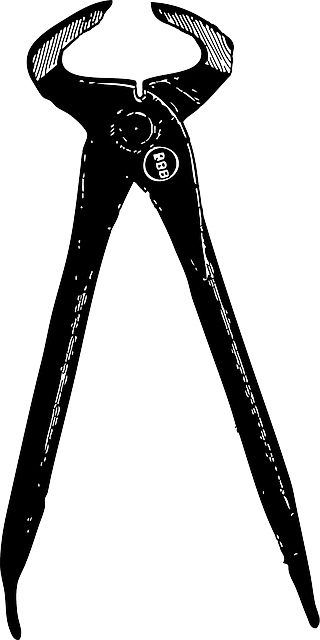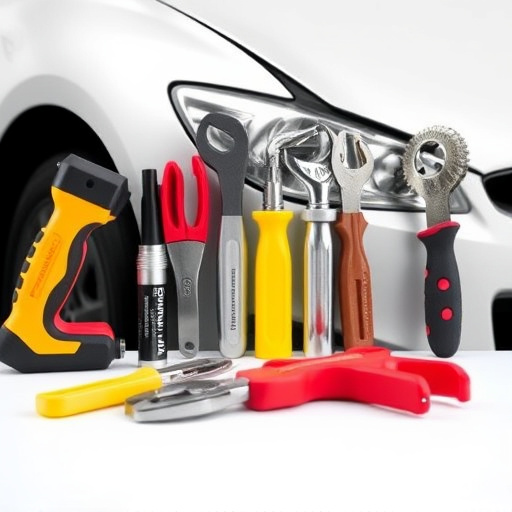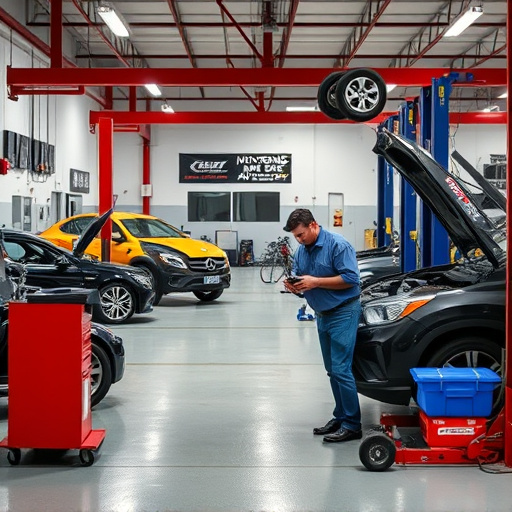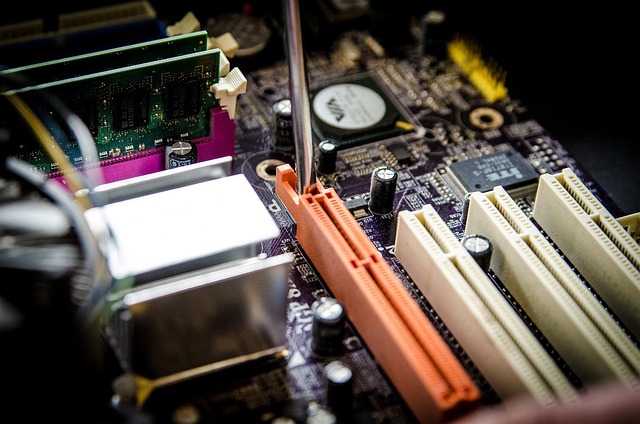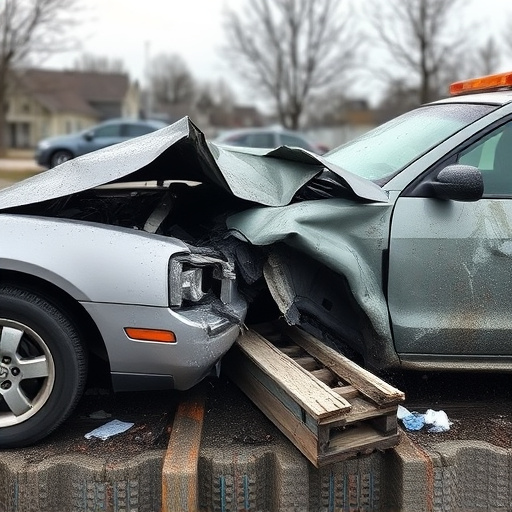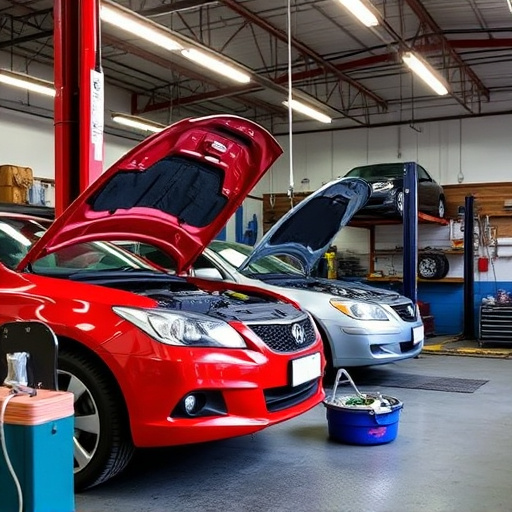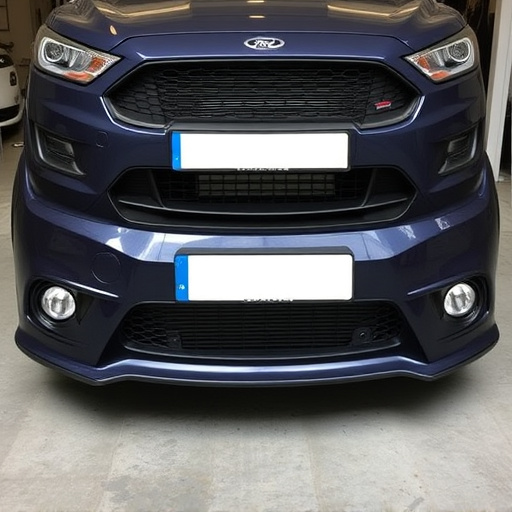Accident-induced axle damage requires meticulous technician assessment, utilizing specialized tools for accurate repair. Initial inspections identify issues like structural failures, misalignments, and wear, guiding specific repairs including tire services and car dent fixes to restore vehicles to pre-accident condition. Skilled technicians are crucial for effective axle repair after accidents, addressing common age-related and maintenance-related vulnerabilities.
After a vehicle accident, technicians need to expertly diagnose any axle issues to ensure safe and effective repairs. This article delves into the process, exploring key techniques like visual inspection methods and specialized tools designed for accurate axle diagnosis. We also uncover common causes of post-accident axle failures, empowering both professionals and informed folks alike to navigate the complexities of axle repair with confidence.
- Assessing Damage: Visual Inspection Techniques
- Specialized Tools for Axle Diagnosis
- Common Causes of Axle Failure After Accidents
Assessing Damage: Visual Inspection Techniques
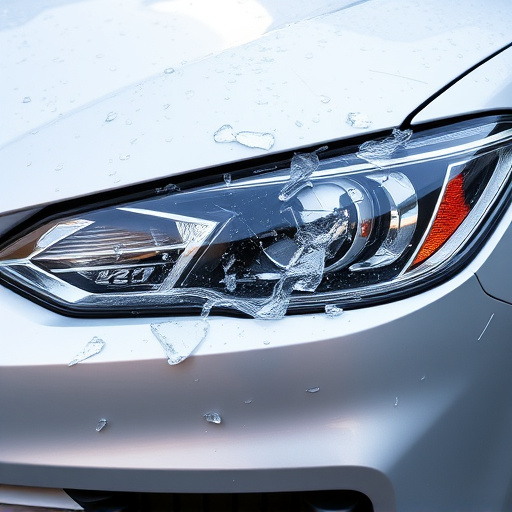
After an accident, technicians employ meticulous visual inspection techniques to assess damage to the axle system. They start by examining the exterior for visible signs like dents, cracks, or misalignments in the axle housing, suspension components, and wheels. Using specialized tools, they carefully inspect the condition of the axle bearings, bushings, and shafts for any wear, tear, or deformation that could indicate underlying issues.
Close attention is paid to the tires and their alignment, as even minor adjustments can affect overall vehicle stability. Technicians also perform a thorough check on the brake system components connected to the axles, ensuring they remain functional and secure following the accident. This initial visual assessment plays a crucial role in pinpointing specific axle repair needs, guiding the subsequent process of vehicle restoration, including necessary tire services and car dent repairs.
Specialized Tools for Axle Diagnosis

Technicians employ specialized tools tailored for accurate axle diagnosis after accidents. These tools include advanced scanning devices that can detect even subtle anomalies in the electronic systems controlling the axle, offering insights into potential issues like sensor malfunctions or hydraulic leaks. Additionally, hydraulic pressure gauges and visual inspection equipment allow for a comprehensive assessment of physical damage, ensuring no overlooked cracks or misalignments.
For luxury vehicle repair cases, these tools prove indispensable as precision is paramount. Car body shops rely on them to not only identify axle repair needs but also to ensure the integrity of other components, such as auto glass replacement, following an accident. This meticulous process guarantees that every aspect of the vehicle is safely and effectively restored to its pre-accident condition.
Common Causes of Axle Failure After Accidents
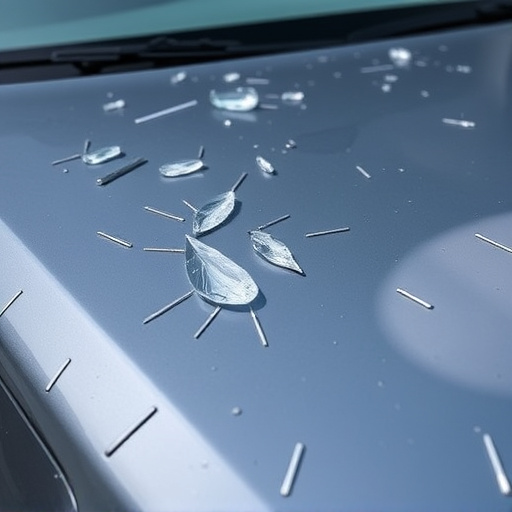
Axle issues are a common problem that arises after vehicle accidents, often requiring skilled technicians for effective axle repair after accident. The initial assessment by auto body repairs experts is crucial to identifying the root cause of the failure. One of the primary reasons for axle damage is the intense force and impact during a collision, leading to structural failures or misalignments. These incidents can cause severe damage, including cracked or broken axle components, bent axes, or separated joints, all of which require specialized auto body repairs.
Another significant factor contributing to axle failure post-accidents is the age and condition of the vehicle. Over time, wear and tear accumulate on axles, making them more susceptible to damage during a collision. Old or poorly maintained vehicles are at higher risk of experiencing critical axle repair needs after even minor accidents. Therefore, technicians must thoroughly inspect all relevant components to pinpoint the exact cause and provide appropriate solutions in an automotive body shop setting.
When diagnosing and repairing axle issues after an accident, technicians employ a combination of meticulous visual inspections and advanced tools. By understanding common causes of axle failure, such as impact damage, component wear, and structural integrity compromise, they can ensure effective repairs. Leveraging specialized equipment allows for accurate identification of problems, ultimately facilitating prompt and reliable axle repair after accidents, restoring vehicle safety and performance.


